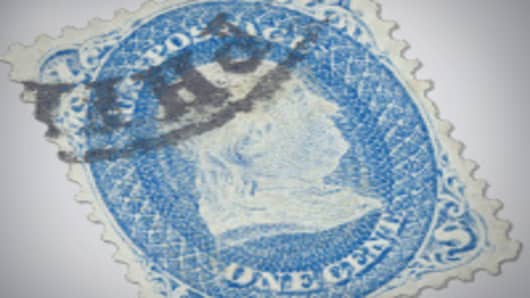Asian and American buyers have stayed in the market even through this downturn. Donald Sundman, president of Camden, NY’s Mystic Stamp Co., says he sees more stamps on the market now, but prices have stayed steady. That could also be because new supplies of stamps, from Asian countries with once-restricted markets, make for fresh markets in philately.
These new opportunities expose the risk of thinking like an investor, and trying to corner the market. Sundman, whose firm has been around since 1923 and boasts about 50,000 active clients and 150 employees, says it can be easy to corner the market in a particular stamp category, but once you achieve this ownership milestone, it could cause other collectors to lose interest. No one wants to be the second guy to climb Mt. Everest, it seems.
Right now, he says, one hot item is the Pony Express cover—a cover is a used envelope with the mailing address, stamp and cancellation mark intact—which can fetch “in the hundreds of thousands,” [of dollars] he says.
And the relatively small size of the stamp market, new investors need to be aware of scams.
“Outright forgeries are rare since it’s hard to do,” says Sundman. But if a stamp’s backing gum is less than new or untouched, it can dramatically affect the price, since condition is the cornerstone of value. “Pristine gum is valued,” he says. “It could be worth half as much without it.” And so there is a cottage industry in “repairing” the gum.
Like with art, there are legitimate stamp restoration firms. Shreve and Sundman recommend using a third-party certification service—like the New York-based Philatelic Foundation, for which both men serve as trustees—to obtain a certificate of authenticity.
Stamps also have their own history of alleged Ponzi schemes. In May 2006, the savings of 350,000 Spanish clients were put in jeopardy by two Spanish firms that had offered small investors an opportunity to beat low interest-rate savings accounts with investments in rare stamps.
Police raided the firms — Forum Filatelico and Afinsa – when it suspected existing investors were being paid out with new investor money, Some 4.2 billion euros ($6.0 billion) of investor money is still missing.
As for returns, as a rare tangible collectible, stamps should keep pace with inflation at least.
Sundman says he’s thought of an ETF or a closed-end fund for stamps, but in the end the legal fees made it prohibitively expensive. Even for collectors, the strategy is more “buy-and-love” than buy-and-hold.
“You need to hold a long time to overcome the 25% auction fees,” he says, noting that these transaction costs, as well as the price of storage and maintenance to ensure that the condition of the stamp remains perfect, make it tough to get much back.
(Editor's Note: This article was originally published in September 2009.)


